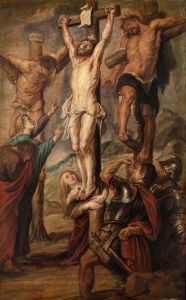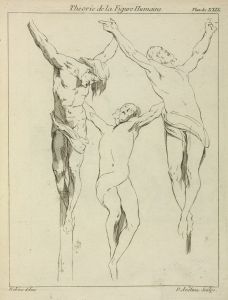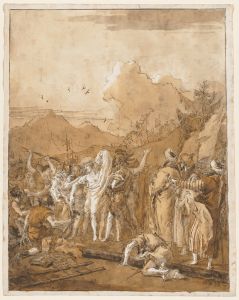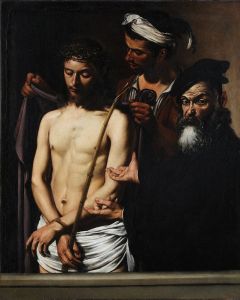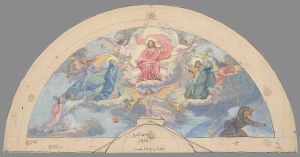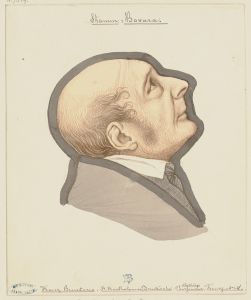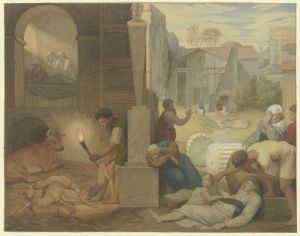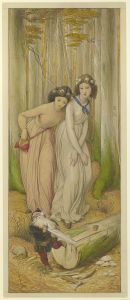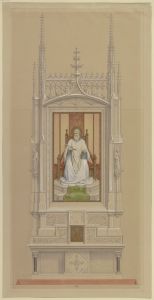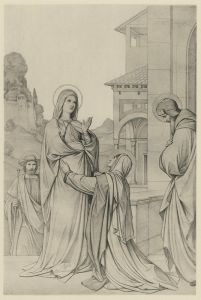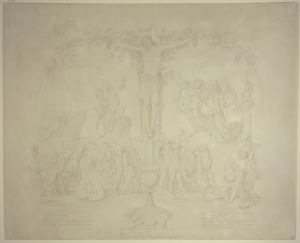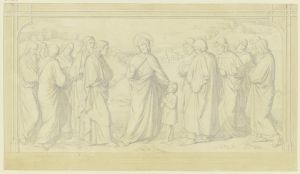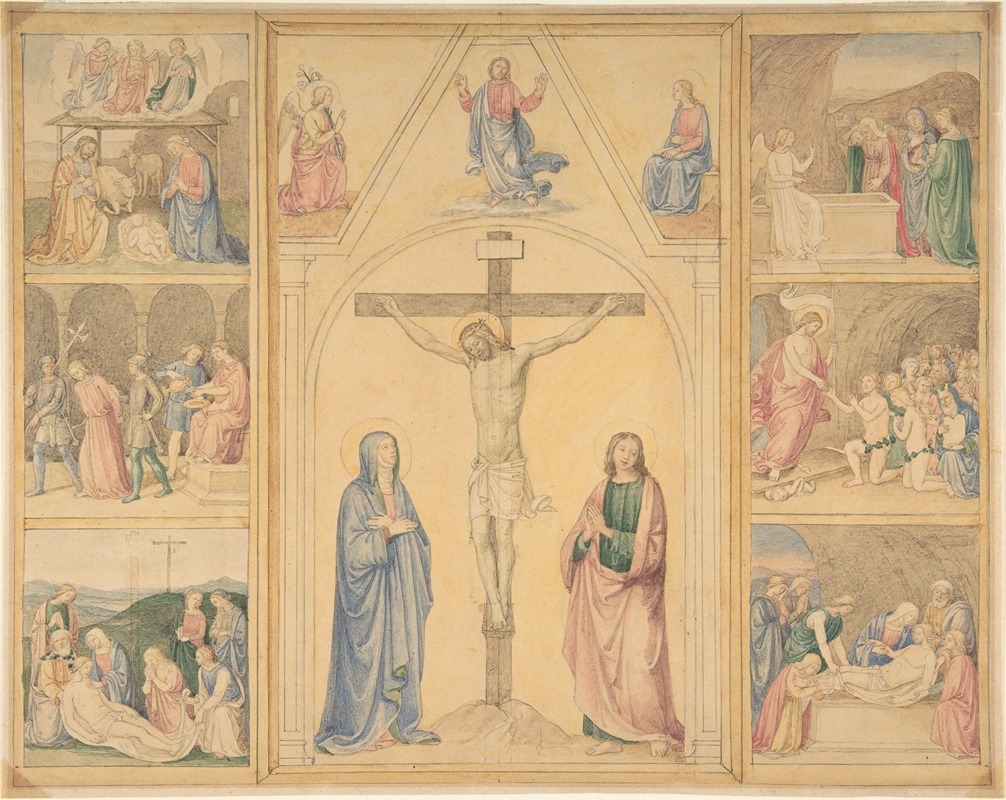
Christ on the Cross with Six Scenes from the Life of Christ
A hand-painted replica of Eduard von Steinle’s masterpiece Christ on the Cross with Six Scenes from the Life of Christ, meticulously crafted by professional artists to capture the true essence of the original. Each piece is created with museum-quality canvas and rare mineral pigments, carefully painted by experienced artists with delicate brushstrokes and rich, layered colors to perfectly recreate the texture of the original artwork. Unlike machine-printed reproductions, this hand-painted version brings the painting to life, infused with the artist’s emotions and skill in every stroke. Whether for personal collection or home decoration, it instantly elevates the artistic atmosphere of any space.
Eduard von Steinle (1810-1886) was a notable German painter associated with the Nazarene movement, which sought to revive honesty and spirituality in Christian art. One of his significant works is "Christ on the Cross with Six Scenes from the Life of Christ," a painting that exemplifies his dedication to religious themes and his meticulous attention to detail.
"Christ on the Cross with Six Scenes from the Life of Christ" is a multifaceted artwork that combines the central image of the Crucifixion with six smaller scenes depicting key moments from the life of Jesus Christ. This composition not only highlights the pivotal event of the Crucifixion but also provides a broader narrative context by illustrating other significant episodes from Christ's life.
The central image of the painting portrays Jesus Christ on the cross, a common subject in Christian art that symbolizes the sacrifice of Jesus for humanity's sins. Steinle's depiction is marked by its emotional intensity and detailed rendering, capturing the solemnity and gravity of the moment. The figure of Christ is shown with a serene yet sorrowful expression, emphasizing both his divinity and his human suffering.
Surrounding the central Crucifixion scene are six smaller panels, each depicting a different event from the life of Christ. These scenes are arranged in a manner that guides the viewer through a visual narrative of Christ's life, from his birth to his resurrection. The six scenes typically include:
1. The Nativity: This scene depicts the birth of Jesus in Bethlehem, highlighting the humble beginnings of the Savior. 2. The Baptism of Christ: This panel shows Jesus being baptized by John the Baptist in the River Jordan, marking the beginning of his public ministry. 3. The Transfiguration: This event, where Jesus is revealed in his divine glory to Peter, James, and John, underscores his divine nature. 4. The Last Supper: This scene captures the moment when Jesus shares his final meal with his disciples, instituting the Eucharist. 5. The Agony in the Garden: This panel depicts Jesus praying in the Garden of Gethsemane, expressing his anguish before his arrest. 6. The Resurrection: This final scene celebrates Jesus' victory over death, symbolizing hope and eternal life for believers.
Steinle's work is characterized by its clear, linear style and vibrant colors, which are typical of the Nazarene movement. The artist's attention to detail and his ability to convey deep religious sentiment make this painting a significant example of 19th-century Christian art.
The painting reflects Steinle's commitment to the principles of the Nazarene movement, which aimed to revive the spiritual and moral dimensions of art. By focusing on religious subjects and employing a style reminiscent of early Renaissance art, the Nazarenes sought to counteract what they saw as the superficiality and materialism of contemporary art.
"Christ on the Cross with Six Scenes from the Life of Christ" is an important work within Eduard von Steinle's oeuvre and within the broader context of 19th-century religious art. It serves as a testament to the enduring power of Christian iconography and the artist's skill in conveying complex theological themes through visual means.





